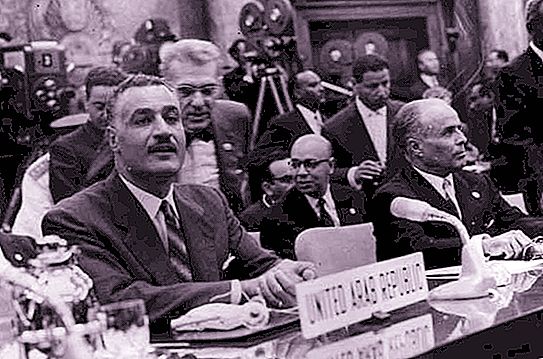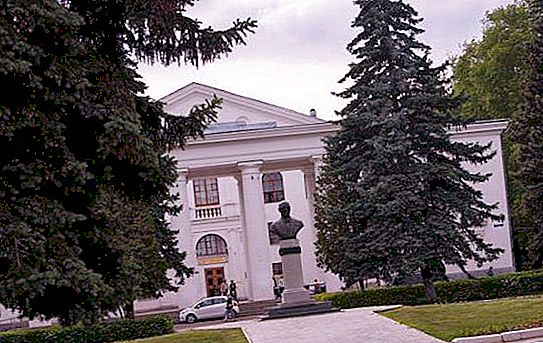The United Arab Republic was created in 1958 as part of Egypt and Syria and existed until 1961, when the latter came out of it after a coup. Egypt continued to be officially known as the UAR until 1971.
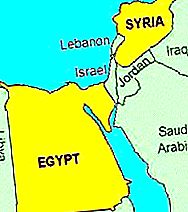
Association Prerequisites
On February 1, 1958, a group of political and military leaders of Syria proposed the President of Egypt Gamal Abdel Nasser the merger of the two states as a first step towards a large pan-Arab state.
The mood for uniting all Arabs was traditionally very strong in Syria, and Nasser was a popular leader throughout the Arab world after the 1956 Suez War. The Arab Socialist Revival Party (Ba'ath) was the main champion of such an alliance.
At that time, there were contradictions in Syria between the strengthening communists and the Ba'ath party in power, which was experiencing an internal crisis, from which its prominent members sought to find salvation in the form of an alliance with Egypt. Syria was a democratic state after the overthrow of the military regime in 1954, but the army continued to play a dominant role in the state at all levels. This did not suit the charismatic and authoritarian inclined Nasser, who sought to fully incorporate Syria into the "Egyptian" power system that had developed under his leadership.
Unification Start
Nasser's final terms for the alliance were decisive and not negotiable:
- referendum on popular support for the unification of the two countries;
- dissolution of parties;
- the withdrawal of the army from politics.
While the referendum seemed like a sensible undertaking to most of the Syrian elite, the latter two conditions were extremely alarming. Many believed that their adoption could destroy political life in Syria. Despite these concerns, Syrian leaders realized that it was too late to turn back. The elite in Syria considers the merger with Egypt as the lesser of two evils, as a means of resisting the growing influence of the Communists. They believed that Nasser's conditions were unfair, but given the intense pressure within their own country, they felt that they had no other choice.
Egyptian President Nasser and Syrian leader Quatli on 1.02.1958 signed a preliminary agreement to unite their countries. Although the signed declaration meant that the United Arab Republic consists of Egypt and Syria, it was emphasized that any of the Arab countries could be part of the UAR. The referendums held in the same month in both countries confirmed the support of the union by their peoples.

Nasser became president of the UAR and very soon began repression against the Syrian communists and opponents of the union, who were dismissed from their posts.
The real practice of building the political system of the UAR
Supporters of the alliance with Egypt believed that Nasser used their Baath party to rule Syria (in the photo below, he is shown in a company with the founders of this party in 1958).
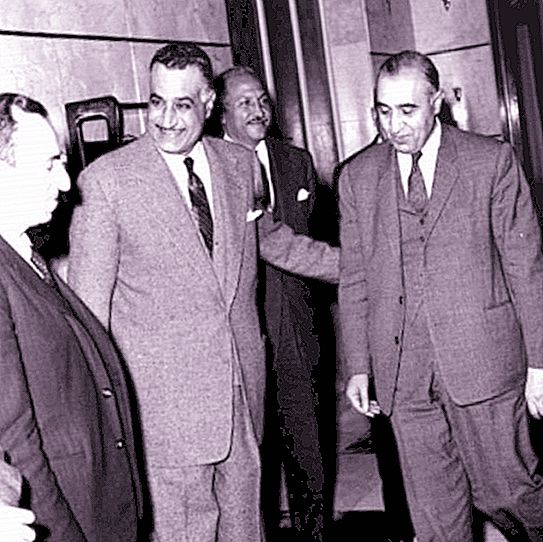
Unfortunately for the Ba'athists, it was not at all his intention to divide power evenly between the Egyptians and the Syrians. Nasser established a new provisional constitution, according to which the United Arab Republic received a National Assembly (parliament) of 600 members (400 from Egypt and 200 from Syria), and dissolved all Syrian political parties, including the Ba'ath. The only legal party in the UAR was the pro-presidential National Union.
Syria and Egypt: two unequal parts of the UAR
Although Nasser allowed the former members of the Ba'ath Party to occupy prominent positions in the structures of power, they never achieved the same weight in managing their own country as the Egyptian officials did. In the winter and spring of 1959-60. Nasser slowly squeezed prominent Syrians from important positions. In the Syrian Ministry of Industry, for example, seven out of thirteen positions were filled by the Egyptians. In the General Petroleum Administration, four of the six largest leaders were Egyptians.
Economic Transformation in the UAR
In June 1960, Nasser tried to carry out economic reforms that were supposed to bring the Syrian economy based on private property to the Egyptian one based on the dominance of the public sector in it. Nasser embarked on an unprecedented wave of nationalization in both Syria and Egypt. At the same time, the opinion of the Syrian elite was ignored. All trade in cotton was placed under the control of the government, and all import-export firms were also nationalized. Nasser announced the nationalization of banks, insurance companies and all heavy industry. Land allotments of more than 100 feddans (1 feddan = 4200 m 2) were subject to seizure from the owners (a peculiar form of "dispossession" in Arabic). Taxes on peasants were drastically reduced to a half until complete abolition in some cases. A ninety percent tax was imposed on all income above 10, 000 Egyptian pounds. Workers and employees were allowed to manage enterprises and were entitled to 25% of their profits. The average working day was also reduced to seven hours without a pay cut.
The rise of anti-Egyptian sentiment
Not everyone in Syria liked these transformations in the spirit of "Arab socialism." Syrian army officers were outraged by their subordinate position to Egyptian officers, and Syrian Bedouin tribes received money from Saudi Arabia to prevent them from becoming loyal to Nasser. In addition, Egyptian-style land reform led to the decline of Syrian agriculture, the communists began to gain influence again, and the Ba'ath intellectuals, who initially supported the alliance, changed their minds.
Moreover, in Egypt itself, the situation was more positive with GNP growth of 4.5% and the rapid growth of industry due to its development of the Syrian market. It also contributed to the growth of discontent in Syria.
Relations with neighbors
The newly created United Arab Republic was perceived as a serious threat in the neighboring kingdoms (at that time) - Iraq and Jordan. Syria was seen by both monarchies as a source of incitement to revolution and a haven for conspirators acting against Jordanian king Hussein and Iraqi monarch Faisal II. Egypt was generally regarded as a state hostile to the West, supporting both monarchical regimes. Therefore, the United Arab Republic was seen by Iraq and Jordan as a direct adversary. Between the two countries in February 1958 an anti-Nasser military alliance was created with a single military command and a single military budget, 80% of which was to be provided by Iraq, and the remaining 20% - by Jordan. In fact, a federation of the two countries arose, however, quickly disintegrated.
The creation of the UAR was also hostile in neighboring Lebanon, whose president, Camille Chamoun, was an opponent of Nasser. Clashes have begun in the country between supporters of accession to the UAR and adherents of independence.
Revolution in Iraq
On July 14, 1958, Iraqi officers staged a military coup and overthrew the monarchy in the country. Nasser immediately recognized the new government and stated that "any attack on Iraq would be tantamount to an attack on the UAR." The next day, American marines and British troops landed in Lebanon and Jordan to protect the two countries from the attack of pronaser forces.
Nasser suggested that the United Arab Republic would soon replenish with a new member - Iraq. However, the new Iraqi leadership, seeing the fate of their Syrian colleagues in the UAR, was in no hurry to give up power. And in 1959, Iraqi Prime Minister Kassem completely stopped negotiations on accession to the UAR.
In 1963, after the Ba'ath Party representatives came to power in Syria and Iraq, a new attempt was made to unite these countries with Egypt. The leaders of the three countries even signed a joint communique on the creation of the Federation. But further, the business of unification did not move due to disagreements between the countries about the state structure of the new country.
The collapse of the UAR and its continuation
September 28, 1961 a group of officers carried out a coup and proclaimed the independence of Syria from the UAR. Although the leaders of the coup were ready to continue the existence of an alliance on certain conditions that put Syria on an equal footing with Egypt, but Nasser refused such a compromise. He initially intended to send troops to overthrow the new regime, but abandoned this intention as soon as he was informed that the last of his allies in Syria had recognized the new government. In the speeches that followed the Syrian coup, Nasser stated that he would never give up his goal of a final Pan-Arab alliance. However, he will never achieve new tangible success on the way to this goal.
Nasser's hopes for a revival of the union were reflected in the fact that under him Egypt continued to bear the name "UAR", which lasted until 1971.
A new attempt to unite the Arab states was made in the 70s by the Libyan leader Muammar Gaddafi. As a result of his efforts, in 1971 the Federation of the Arab Republics (FAR) arose as part of Libya, Egypt and Syria, which existed until 1977 (in the photo below, the leaders of the three countries sign the agreement on the Federation).
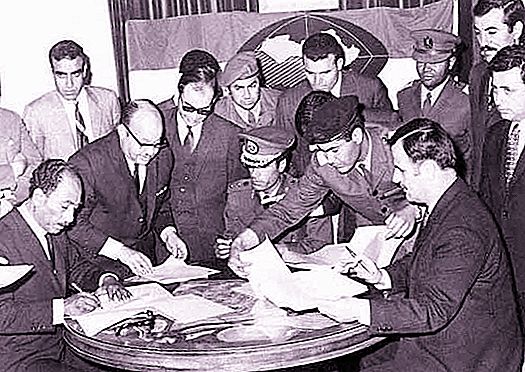
This formation was declarative in nature, there were no common governing bodies of the FAR, and the participating countries constantly sought to conclude bilateral alliances (Libya-Egypt, Syria-Egypt) within the federation. Libya and Egypt even managed to fight a little in 1977, remaining members of the FAR.

